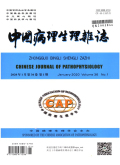- 钛学术文献服务平台 \
- 学术期刊 \
- 医药卫生期刊 \
- 基础医学期刊 \
- 中国病理生理杂志期刊 \
null
Lactate-a suicide mode or survival kit
基本信息来源于合作网站,原文需代理用户跳转至来源网站获取
摘要:
Cellular energy status is often believed to be crucial in the patho physiology of severe acute diseases involving sepsis or trauma such as multiorgan failure, mu ltiorgan dysfunction syndrome, systemic inflammatory response system, etc. Wit h this in mind increased blood lactate, mainly considered only as a marker or t issue hypoxia is a classical tool used to assess the severity of the illness an d to predict the pejorative outcome. However, during the past years the actual r ole of hypoxia in the pathophysiology of such acute diseases with an increased b lood lactate has been questioned.
The association between increased blood lactate concentration and poor prognosi s in ICU patients is well documented but it is clearly not a cause-effect relat ionship. It is similar to what occurs in the case of increased blood ketone I n severe insulin deficient state and it would be a major understanding to be lieve that lactate is a toxic compound in acute states. In acute illness, incre ased lactate concentration or lactate metabolism can be due to the combination of various origin in which the role of splanchnic bed is prominent. In the case of strong reduction in oxygen delivery, such as severe shock, it is quite clear that there is a relationship between cellular energy defect and increased lact ate production. But even in these cases a decrease in lactate metabolism (eithe r oxidative or recycling routes) may also be involved. In septic states, the ro le of blood lactate is a matter of controversy and several reports have e mphasiz ed the fact that hyperlactatemia in sepsis was not due to the oxygen d eficit. It has been shown that mild hyperlactatemia in stable septic patients was due to an impaired lactate clearance rather than overproduction. Besides the main conc lusion that any therapeutic attempts to increase oxygen delivery in such situa tion may not be adapted, another point can be raised concerning the meaning of s uch lactate increase. In fact, increased blood lactate concentration in such sta tes might not be a deleterious event but rather an adaptive response, as in th e case of hypoxia.
The pathway of lactate metabolism and its regulation has long been known and it s role as carbon shuttle has been extended to all organs and to energy or redox shuttling. Indeed, lactate must be viewed as a key metabolic intermediate betwee n cells or organs for energy metabolism. Erythrocytes, anaerobic cells, produce ATP by the non-oxidative glycolytic pathway with lactate release while liver which produces ATP from β-oxidation, uses this energy to synthesize glucose fr o m lactate. Hence, by recycling the carbons between lactate and glucose, the liv er actually “respire” for the erythrocyte mass. Since almost all cells can be e ither lactate producers or consumers in view of the whole-body energy economy. In the situation of chronic hypoxia, plasma lactate is increased and this is s upposed to be due to an increased peripheral lactate production. An experiment that has been undertaken on liver lactate metabolism with hypothesis that in vivo would lead to an enhanced liver lactate uptake (since recycling gluc ose- lactate was supposed to be increased), surprisingly showed that a very clear inh ibition was located at the phosphoenolpyruvate carboxykinase whose transcription was depressed by hypoxia. Hence, the net result of hypoxia on lactate metaboli sm is an increase in the steady state of lactate of blood lactate concentratio n due to the inhibition of liver lactate metabolism and the question arises of the metabolic meaning of such increase in lactate.
The increase in lactate might be viewed as a key metabolic event permitting to modify the cell metabolism according to the new condition of hypoxia. In norm oxic condition the concentration of lactate, release by red blood cells is low and it is mainly recycled via liver gluconeogenesis. In peripheral tissues, su ch as muscle or heart, the main substrate is the glucose which is oxidized to CO2 only a small part being possibly released as lactate. During hypoxia, the co ncentration of lactate is higher, due to the liver inhibition and then in many tissues (muscle) the competition between lactate and glucose as carbohydrate s ource for oxidation might be in favor of lactate. This permits to spare some gl ucose for the privileged tissues such as heart. This has been shown in humans w here chronic hypoxia led to an increase glucose in heart. In acute situation, our recent investigation in cardiac surgery patients usin g an exogenous lactate challenge, whereby one could investigate the dynamic asp ect of lactate metabolism (lactateproduction, lactate clearance) together with other previous similar work (including liver surgery and brain metabolism) showe d that the increased lactate concentration permits an increase of substrate read ily oxidizable even after a transient period of hypoxia or ischemia. Furthermore , by permitting shuttle energy, redox power or carbons from one organ to another , lactate metabolism allows an intra- or interorgan cooperation which in turn l imits the energy failure of one organ by metabolism of another such as the liver for example. Although high lactate is related to poor outcome, this compound I s a “survival kit” rather than a “suicide mode”.

推荐文章
期刊_丙丁烷TDLAS测量系统的吸收峰自动检测
带间级联激光器
调谐半导体激光吸收光谱
雾剂检漏 中红外吸收峰 洛伦兹光谱线型
不同盐度、温度及光照对漂浮浒苔生理生态的影响
浒苔
盐度
温度
光照
生理生态
期刊_联合空间信息的改进低秩稀疏矩阵分解的高光谱异常目标检测
高光谱图像
异常目标检测 低秩稀疏矩阵分解 稀疏矩阵 残差矩阵
内容分析
关键词云
关键词热度
相关文献总数
(/次)
(/年)
引文网络
引文网络
二级参考文献 (0)
共引文献 (0)
参考文献 (0)
节点文献
引证文献 (0)
同被引文献 (0)
二级引证文献 (0)
2001(0)
- 参考文献(0)
- 二级参考文献(0)
- 引证文献(0)
- 二级引证文献(0)
引文网络交叉学科
相关学者/机构
期刊影响力
中国病理生理杂志
主办单位:
中国病理生理学会
出版周期:
月刊
ISSN:
1000-4718
CN:
44-1187/R
开本:
大16开
出版地:
广东省广州市黄埔大道西601号
邮发代号:
46-98
创刊时间:
1985
语种:
chi
出版文献量(篇)
11461
总下载数(次)
3
期刊文献
相关文献
推荐文献
- 期刊分类
- 期刊(年)
- 期刊(期)
- 期刊推荐
中国病理生理杂志2022
中国病理生理杂志2021
中国病理生理杂志2020
中国病理生理杂志2019
中国病理生理杂志2018
中国病理生理杂志2017
中国病理生理杂志2016
中国病理生理杂志2015
中国病理生理杂志2014
中国病理生理杂志2013
中国病理生理杂志2012
中国病理生理杂志2011
中国病理生理杂志2010
中国病理生理杂志2009
中国病理生理杂志2008
中国病理生理杂志2007
中国病理生理杂志2006
中国病理生理杂志2005
中国病理生理杂志2004
中国病理生理杂志2003
中国病理生理杂志2002
中国病理生理杂志2001
中国病理生理杂志2000
中国病理生理杂志1999
中国病理生理杂志2001年第9期
中国病理生理杂志2001年第8期
中国病理生理杂志2001年第7期
中国病理生理杂志2001年第6期
中国病理生理杂志2001年第5期
中国病理生理杂志2001年第4期
中国病理生理杂志2001年第3期
中国病理生理杂志2001年第2期
中国病理生理杂志2001年第12期
中国病理生理杂志2001年第11期
中国病理生理杂志2001年第10期
中国病理生理杂志2001年第1期

 免费查重
免费查重










